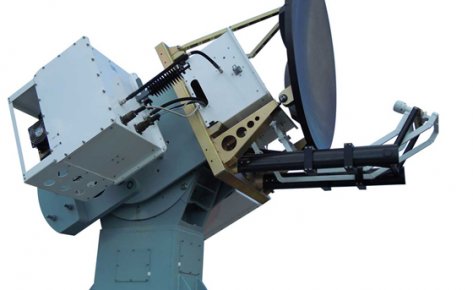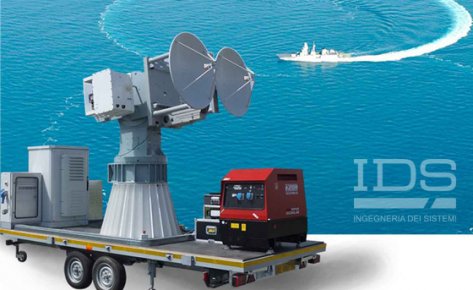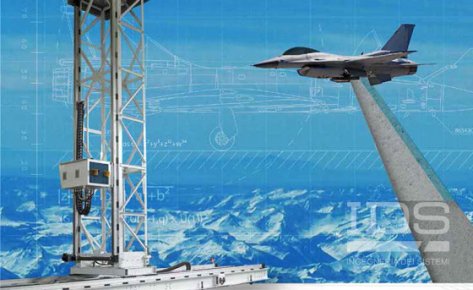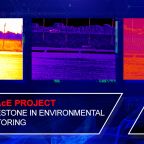An advanced tool for indoor and outdoor RCS measurement
RCSMS is a cost effective and flexible EM measurement system, which provides accurate radar cross section (RCS) assessments of naval or aeronautical targets. This can include ship components or scale models as well as aircraft components, scaled or full scale aircraft models, missiles and unmanned aerial vehicles (UAVs). Measurements can be performed indoors in anechoic, partial anechoic, or non-anechoic environments, or outdoors in suitable test areas free of large obstacles.
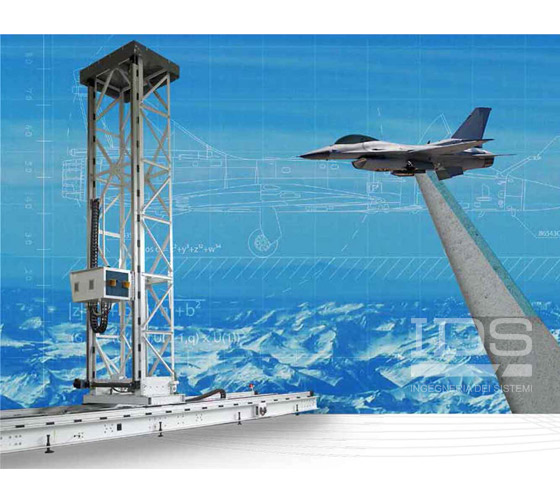
RCSMS is a near field measurement system that uses a 1D, or 2D scanner to position the radar head to acquire 2D/3D synthetic aperture radar (SAR), or inverse synthetic aperture radar (ISAR), diagnostic radar images of the target. These are then converted to undistorted far-field like radar images. The measurement procedure has been extensively validated and provides sensitivity and accuracy comparable to traditional compact and far-field ranges.
RCSMS Applications
RCSMS Main Applications
Naval vessels, military aircraft, UAVs and even missiles all have a need to avoid detection to increase their survivability and mission success. One way to do this is to reduce their visibility to radar by ensuring that their radar cross section (RCS) is as small as possible.
By fully evaluating a naval or aerial platform’s RCS characteristics during the design cycle or when planning an upgrade, with the sensitivity compliant with stealth platform requirements, modifications can be made to reduce the radar cross section and therefore increase survivability.
Download RCSMS Brochure
RCSMS is a near field and transportable measurement system which provides accurate Radar Cross Section (RCS) assessments of full scale targets.
RCSMS Main Benefits
RCSMS RCS Measurement System TECHNICAL SHEET
- Target dimensions from a few cm up to tens of meters
- Measurement sensitivity compliant with stealth platform requirements
- Measurements are performed in near-field conditions (dependent on target size and required sensitivity). The resultant near-field measurements are converted to far-field using spherical wave compensation
- Measurements in non-anechoic environments, indoor, or outdoor
- Control of environmental clutter, multipath and target support contributions
- Operational Frequency Band: 0.4-40 GHz
- Diagnostic analysis of the main scattering centers (hot spots) of a target
- Background vector subtraction spatial filtering in the radar image
As RCSMS is configurable in regards to frequency range and planar scanner dimensions, the following specifications are given as an example:
Measurement System Capabilities
Tecnical Specs |
Values |
|---|---|
| Frequency Range | 1 – 40 GHz coherent |
| TX/RX Polarization | HH, VV, HV, VH (one at a time) |
| Measurement Range | From a few meters up to hundreds of meters |
| Resolution (Range and Cross-Range) | Down to 5 cm depending on frequency band and scan length |
RF Performance
Tecnical Specs |
Values |
|---|---|
| Waveform (VNA) | Stepped LFMCW with PRF agility |
| System Noise Figure | |
| NERCS (Noise Equivalent RCS, or minimum detectable RCS at the target distance) | < -50 dBsm @ 35m in the Ku and Ka frequency bands < -60 dBsm @ 35m in L, S, C and X frequency bands |
| Transmit Power | up to 40 dBm |
| Minimum measurable RCS with 20 dB Signal-to-Noise Ratio (SNR) | -35 dBsm @ 35m, with about ±1 dB accuracy with respect to receiver noise interference signal |
Pulse Operation
Tecnical Specs |
Values |
|---|---|
| Pulse Repetition Frequency (PRF) | Up to 50 MHz |
| Range Gate Pulse Width | 5 ns – 80 μs at 5ns steps |
- RF and Antennas – consisting of a Vector Network Analyzer (VNA) to generate and acquire RF signals and a specialized radar head including sets of antennas for different bandwidths
- Antenna positioner – a 2D wide planar scanner to position the TX/RX in a planar surface in horizontal and vertical directions
- Target positioner – a low RCS support and rotational positioner
- Acquisition control software – for hardware control, real time configuration and data storage
- Post-processing software – for image generation and RCS estimation


